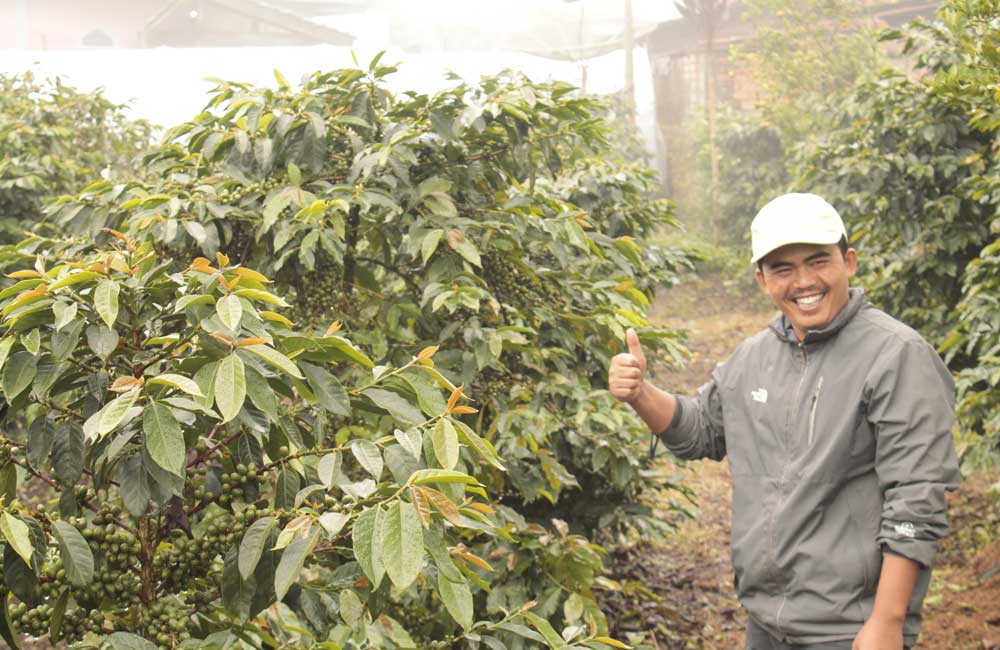1. La cultura del café colombiano
¿Qué es la cultura? Una forma de vida, tradiciones, costumbres, economía, valores, producción y consumo, gastronomía… y en Colombia todo esto lo reúne el café. El café colombiano es mucho más que una bebida estimulante y con unas propiedades organolépticas únicas, el café en Colombia es cultura.
Esto es algo que los colombianos saben, pero que también es reconocido fuera de Colombia. El “café de Colombia” es una indicación geográfica protegida de forma oficial por la Unión Europea, una marca de certificación tanto en Estados Unidos como en Canadá y una denominación de origen protegida en países como Ecuador, Bolivia y Perú.
El café ha sido un elemento fundamental en la historia, la identidad y el desarrollo de Colombia. Según un artículo de BBC News Mundo, el café ha impulsado la economía colombiana desde principio del siglo XX y se ha convertido en un símbolo nacional.
2. Historia del café en Colombia

El café colombiano tiene una larga y arraigada historia
El origen del café en Colombia se sitúa en el siglo XVIII, cuando los jesuitas introdujeron las primeras plantas de café procedentes de Venezuela. La primera referencia que encontramos es en el libro El Orinoco Ilustrado (1730) del sacerdote jesuita José Gumilla. Según este, el café se cultivaba en la misión de Santa Teresa de Tabajé, cerca de la desembocadura del río Meta en la Orinoquía .
Otra versión señala que el sacerdote jesuita Francisco Romero fue el responsable de impulsar el cultivo de café en el departamento de Santander, al imponer como penitencia a sus fieles sembrar café en sus tierras.
Desde entonces, el café se ha extendido por todo el territorio nacional, impulsado por la demanda internacional y el apoyo gubernamental. El café se ha convertido en uno de los principales productos de exportación de Colombia y en un factor de integración social, económica y cultural.
Colombia llegó a ser el segundo país exportador de café del mundo, después de Brasil, en las primeras décadas del siglo XX. Ahora, según la Organización Internacional del Café está entre el tercer y cuarto puesto.
A lo largo de los años el café colombiano ha evolucionado para adaptarse a los cambios del mercado y las preferencias de los consumidores, dando lugar al surgimiento de la industria del café de especialidad en Colombia.
3. Importancia del café en la economía y la cultura colombianas
 El café en Colombia es parte de la cultura nacional
El café en Colombia es parte de la cultura nacional
El café es un producto de gran importancia para la economía y la cultura colombiana. Es uno de los principales productos de exportación de Colombia y una importante fuente de ingresos para el país. El café también ha generado cultura del trabajo, identidad nacional e integración social, económica y cultural .
Colombia produce 14 millones de sacos de 70 kg al año aproximadamente. De eso, 13 millones (un 93%) de sacos son para exportar, de acuerdo a cifras de la Federación de Cafeteros de Colombia.
El café también forma parte de la gastronomía y la cotidianidad de los colombianos. El café se consume en diferentes formas y momentos del día, como el tinto, el perico, el café con leche o el cappuccino. El café es una expresión de la cultura y la diversidad de Colombia.
El contrapunto al auge de la industria del café y del café de especialidad es que el 93% se termina exportando. Esto hace que, paradójicamente, Colombia importe café de menor calidad de países vecinos .
Hay iniciativas, como la de Catación Quindio, que están fomentando la venta y el consumo de café de especialidad en este país. Aún así, queda mucho trabajo por hacer para que los mismos colombianos tengan la posibilidad consumir su propio café y la cultura cafetera del país continúe su desarrollo.
Al comprar café colombiano de especialidad estás ayudando a que esto suceda.
4. Evolución del cultivo y producción de café en Colombia

El cultivo de café colombiano ha evolucionado mucho
El cultivo y la cultura de los cafés colombianos ha evolucionado significativamente a lo largo del tiempo, y ha estado influenciado por una variedad de factores históricos, económicos y sociales. En particular, la introducción del café de especialidad ha llevado a cambios significativos en la forma en que se cultiva y se consume el café en Colombia.
Durante gran parte del siglo XIX, el café se cultivaba principalmente en pequeñas parcelas y se vendía en el mercado local. Sin embargo, a medida que el cultivo del café se extendió por todo el país, se establecieron grandes haciendas cafetaleras y se comenzó a exportar el café colombiano a otros países.
El auge del café en Colombia y la creación de las haciendas cafetaleras llevaron a la consolidación de una clase social que controlaba la producción y la exportación del café. Esta élite cafetera colombiana se convirtió en una fuerza política y económica importante en el país y tuvo un papel significativo en la formación de la cultura del café colombiano.
Sin embargo, a medida que la competencia internacional aumentó, los productores de café colombianos comenzaron a buscar formas de diferenciar su producto y destacar en el mercado global.
El café de especialidad se introdujo en Colombia en la década de 1980, cuando algunos productores comenzaron a centrarse en la calidad del café y no solo en la cantidad.
Estos productores, generalmente pequeños caficultores con superficies de entre 1 y 5 hectáreas, comenzaron a implementar prácticas de cultivo y procesamiento más rigurosas. Esto ha permitido producir café de alta calidad que puede competir en el mercado de especialidad.
5. Métodos de cultivo del café colombiano
Durante la época de auge de la producción de café en Colombia, enfocado hacia la exportación y venta a grandes compañías, los métodos de cultivo del café colombiano se fueron mecanizando y estandarizando.
La introducción del café de especialidad en la industria del café colombiano ha dado lugar a un regreso a métodos de cultivo más cuidados y especializados.
Muchos productores de cafés colombianos han adoptado prácticas sostenibles y respetuosas con el medio ambiente en sus operaciones. Estas prácticas incluyen la conservación del suelo y el agua, la reducción del uso de pesticidas y fertilizantes químicos, y la implementación de técnicas de compostaje.
En el café de especialidad tanto la calidad del terreno, como el cultivo sin pesticidas y con métodos respetuosos con el medio ambiente, son muy importantes. También lo son una cosecha selectiva y un correcto procesado. Todo esto requiere de un mayor trabajo y atención por parte los caficultores, lo que repercute en un precio mayor pero también una mejor calidad de café y de vida para ellos.
6. Regiones de café en Colombia

Mapa del eje cafetero de café colombiano
El café colombiano cuenta con una gran diversidad de regiones que se especializan en el cultivo de diferentes variedades de café. Cada una de estas regiones tiene características únicas en términos de clima, suelo, altitud y otros factores que influyen en el sabor y la calidad del café que se produce allí.
Los 10 departamentos (provincias) con mayor producción de café en Colombia son: Huila con 18,07%, Antioquia con 15,77%, Tolima con 12,69%, Cauca con 9,04%, Caldas con 8,76%, Valle del Cauca con 5,83%, Risaralda con 5,99%, Nariño con 4,37%, Santander con 4,78% y Cudinamarca con 3,34%.
- Huila (18,07% de la producción de café en el país):
- Altitud: entre 1.200 y 1.900 metros sobre el nivel del mar.
- Clima: templado con lluvias todo el año.
- Variedades de café: Caturra, Colombia, Castillo, Typica y Tabi.
- Cultivo: predominantemente caficultura tradicional y algunas fincas con sistemas de producción más modernos.
- Antioquia (15,77% de la producción de café en el país):
- Altitud: entre 1.200 y 2.000 metros sobre el nivel del mar.
- Clima: templado con lluvias todo el año.
- Variedades de café: Caturra, Colombia, Castillo, Typica y Bourbon.
- Cultivo: predominantemente caficultura tradicional con algunos sistemas de producción más modernos.
- Tolima (12,69% de la producción de café en el país):
- Altitud: entre 1.200 y 2.000 metros sobre el nivel del mar.
- Clima: cálido con lluvias todo el año.
- Variedades de café: Caturra, Colombia, Castillo y Tabi.
- Cultivo: predominantemente caficultura tradicional y algunos sistemas de producción más modernos.
- Cauca (9,04% de la producción de café en el país):
- Altitud: entre 1.200 y 2.200 metros sobre el nivel del mar.
- Clima: templado con lluvias todo el año.
- Variedades de café: Caturra, Colombia, Castillo y Typica.
- Cultivo: predominantemente caficultura tradicional y algunos sistemas de producción más modernos.
- Caldas (8,76% de la producción de café en el país):
- Altitud: entre 1.400 y 2.000 metros sobre el nivel del mar.
- Clima: templado con lluvias todo el año.
- Variedades de café: Caturra, Colombia, Castillo, Typica y Tabi.
- Cultivo: predominantemente caficultura tradicional y algunos sistemas de producción más modernos.
- Valle del Cauca (5,83% de la producción de café en el país):
- Altitud: entre 1.000 y 2.000 metros sobre el nivel del mar.
- Clima: cálido con lluvias todo el año.
- Variedades de café: Caturra, Colombia, Castillo, Typica y Bourbon.
- Cultivo: predominantemente caficultura tradicional y algunos sistemas de producción más modernos.
- Risaralda (5,99% de la producción de café en el país):
- Altitud: entre 1.200 y 1.800 metros sobre el nivel del mar.
- Clima: templado con lluvias todo el año.
- Variedades de café: Caturra, Colombia, Castillo, Typica y Bourbon.
- Cultivo: predominantemente caficultura tradicional y algunos sistemas de producción más modernos.
- Nariño (4,37% de la producción de café en el país):
- Altitud: entre 1.800 y 2.100 metros sobre el nivel del mar.
- Clima: fresco con lluvias todo el año.
- Variedades de café: Caturra, Colombia, Castillo, Typica y Bourbon.
- Cultivo: predominantemente caficultura tradicional y algunos sistemas de producción más modernos.
- Santander (4,78% de la producción de café en el país):
- Altitud: entre 1.200 y 1.800 metros sobre el nivel del mar.
- Clima: templado con lluvias todo el año.
- Variedades de café: Caturra, Colombia, Castillo, Typica y Bourbon.
- Cultivo: predominantemente caficultura tradicional y algunos sistemas de producción más modernos.
- Cundinamarca (3,34% de la producción de café en el país):
- Altitud: entre 1.200 y 2.000 metros sobre el nivel del mar.
- Clima: cálido con lluvias todo el año.
- Variedades de café: Caturra, Colombia, Castillo y Typica.
- Cultivo: predominantemente caficultura tradicional y algunos sistemas de producción más modernos.
Cada uno de estos departamentos tiene su propio microclima y variedades de café, lo que da lugar a perfiles de sabor y calidad únicos en el café que se produce. Además, los productores de café de especialidad colombiano utilizan diferentes procesos y experimentan con nuevos, como la fermentación anaeróbica. Por lo que realmente no es pertinente hablar sobre un perfil típico de café colombiano.
A través del auge y desarrollo del café de especialidad en Colombia y a nivel global, se está abriendo mucho más el abanico de variedades y perfiles de sabor que podemos encontrar en cada región cafetera.
7. Zonas cafeteras colombianas
 Mapa de las zonas cafeteras en Colombia Estos departamentos podemos agruparlos en varias zonas cafeteras. Esto nos será útil para comprender algunas de las diferencias que podemos encontrar el café colombiano de diferentes departamentos e incluso del mimo departamento.
Mapa de las zonas cafeteras en Colombia Estos departamentos podemos agruparlos en varias zonas cafeteras. Esto nos será útil para comprender algunas de las diferencias que podemos encontrar el café colombiano de diferentes departamentos e incluso del mimo departamento.
Zona Norte: Santander, Norte de Santander, La Guajira, Magdalena y el Cesar. Esta zona tiene una temperatura promedio de 24°C y una precipitación promedio de 1.800 mm al año. El café florece en marzo, justo cuando se acerca la temporada de lluvias, y se recolecta en octubre / noviembre, cuando termina.
Zonas Centro Norte y Centro Sur: Boyacá, Cundinamarca, Antioquia, Caldas, Quindío y Risaralda. Estas zonas tienen una temperatura promedio de 18°C y una precipitación promedio de 2.000 mm al año. En la zona del central norte, la temporada de cosecha principal es de octubre a diciembre, al final de la segunda temporada húmeda. Sin embargo, hay una segunda cosecha durante mayo y junio, cuando termina la primera temporada húmeda.
Zona Sur: Huila, Tolima, Cauca, Valle del Cauca y Nariño. Esta zona tiene una temperatura promedio de 20°C y una precipitación promedio de 1.800 mm al año. La cosecha principal es de septiembre a diciembre.
Zona Oriental: Arauca, Casanare y Meta. Esta zona tiene una temperatura promedio de 24°C y una precipitación promedio de 2.000 mm al año. La cosecha principal es de octubre a febrero.
8. Temporada de cosecha del café colombiano
Debido a su ubicación geográfica y a las diferentes altitudes y climas en cada región productora, se pueden encontrar dos principales temporadas de cosecha del café en Colombia.
La primera temporada de cosecha del café colombiano se produce entre abril y junio, y la segunda temporada ocurre entre septiembre y diciembre. Aún así la temporada de cosecha puede variar en cada región, e incluso dentro de una misma región puede haber diferentes fechas de cosecha dependiendo de la altitud y otros factores climáticos.
Por ejemplo, en la región de Huila, ubicada en el sur de Colombia, la cosecha principal ocurre entre septiembre y diciembre, mientras que, en la región de Nariño, ubicada en el suroeste del país, la cosecha principal se produce entre abril y junio. En la región de Antioquia, ubicada en el centro del país, la cosecha principal es en junio y julio.
La calidad del café colombiano puede variar según la temporada de cosecha, y en general se considera que la cosecha de mitad de año (abril-junio) produce granos de café de mejor calidad y más grandes, mientras que la cosecha de fin de año (septiembre-diciembre) produce granos más pequeños y de menor calidad.
9. Caficultores colombianos y su labor
 Caficultores colombianos en un plantación La labor de los caficultores para producir café de especialidad es de suma importancia, y en el café colombiano no es diferente. Su trabajo diario tiene un impacto directo en la calidad del café que se produce.
Caficultores colombianos en un plantación La labor de los caficultores para producir café de especialidad es de suma importancia, y en el café colombiano no es diferente. Su trabajo diario tiene un impacto directo en la calidad del café que se produce.
Los caficultores que se centran en el café de especialidad en Colombia suelen ser pequeños productores con fincas de entre 1 y 5 cinco hectáreas comprometidos con formas de cultivo sostenible y la producción de granos de alta calidad.
De acuerdo con la Federación Nacional de Cafeteros de Colombia, estos caficultores han trabajado incansablemente para mejorar sus técnicas de cultivo y procesamiento a lo largo de los años. Esta organización también proporciona asesoramiento a los caficultores colombianos para ayudarles a mejorar su producción y asegurarse de que estén utilizando prácticas sostenibles.
Muchos caficultores colombianos trabajan en cooperativas y organizaciones que les permiten tener una mayor participación en la cadena de suministro del café y una mayor influencia en el precio que reciben por sus granos. Estas organizaciones también ofrecen a los caficultores un mayor acceso a la capacitación y recursos para mejorar su producción y calidad.
La labor de los pequeños caficultores en Colombia es crucial para el éxito de la industria del café de especialidad en este país.
10. Cata Café Exports & Ineffable Coffee

Cata exports se centra en la sostenibilidad humana y ambiental de la industria
Desde Ineffable Coffee trabajamos con Cata Café Export, una empresa dedicada a la exportación de café verde de especialidad afincada en Colombia. Esta empresa tiene como misión ayudar a desarrollar la industria de café colombiano de especialidad apoyando a los pequeños caficultores. Busca crear un puente entre productores, tostadores y consumidores.
Con esta misión, trabaja con 200 productores afrocolombianos en Cauca y un equipo de jóvenes productores en Huila. Cada saco de café que compramos representa una esperanza para la economía y para los jóvenes que aspiran a un futuro mejor en la industria cafetera colombiana.
11. Comprar café colombiano
Todo se disfruta más cuando tenemos conocimiento para contextualizarlo, es lo que acaba formando una cultura. Queremos ayudar a que la cultura del café de especialidad en Colombia se siga desarrollando, puesto que significa que nuestra cultura cafetera también lo hace. Y para eso, contamos contigo.
En nuestra tiende online encontrarás café colombiano de especialidad, fresco, de temporada y tostado en su punto óptimo para que tú también seas parte de esta bonita cultura.









